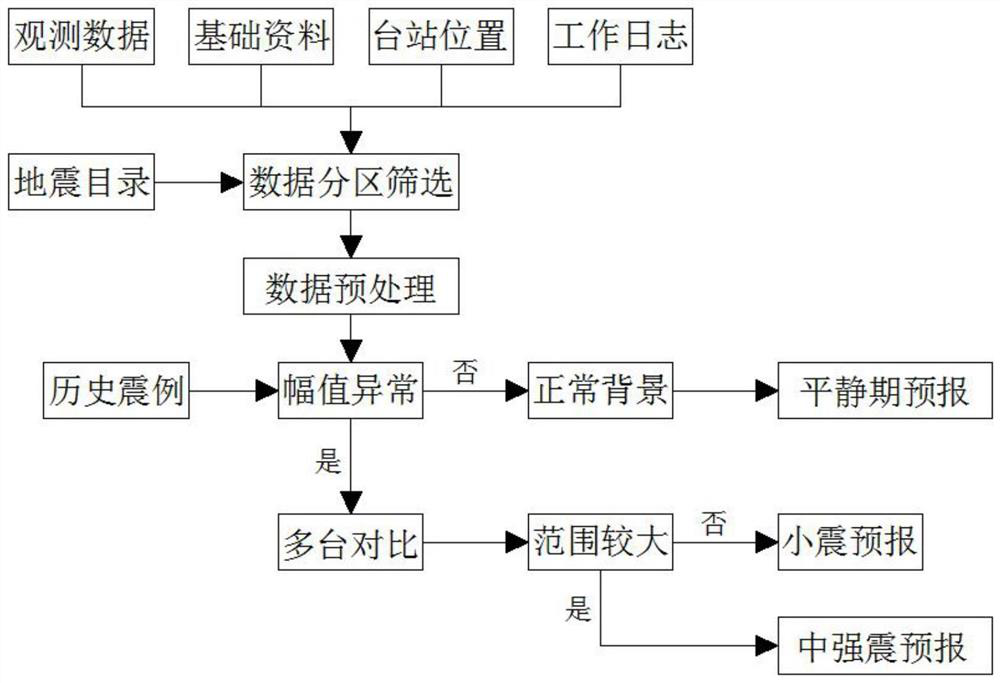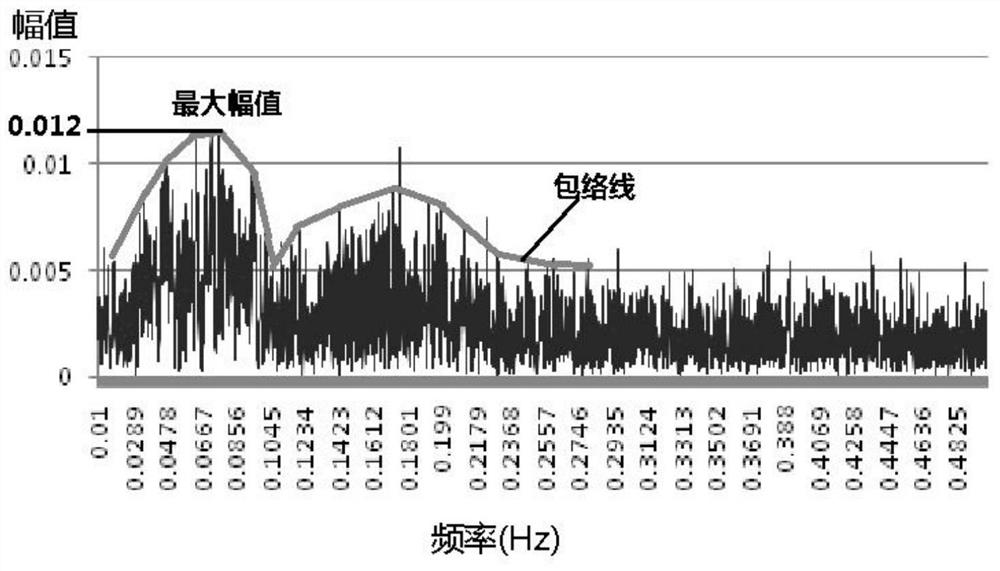Surface wave spectrum analysis method for earthquake forecast
A spectrum analysis and surface wave technology, applied in the field of surface wave spectrum analysis of earthquake prediction, can solve the problem of insufficient earthquake prediction accuracy, and achieve the effect of clear indicators and results
- Summary
- Abstract
- Description
- Claims
- Application Information
AI Technical Summary
Problems solved by technology
Method used
Image
Examples
Embodiment 1
[0064] Example 1: Calm Period Forecast
[0065] 1. The earthquakes used in the analysis are shown in Table 1.
[0066] date Longitude (East) Latitude (North Latitude) magnitude Reference location 2016-04-15 130.81 32.68 4.9 Kyushu, Japan
[0067] Table 1 The catalog of earthquakes used as the source of Example 1
[0068] 2. For the frequency spectrum of each station, see Figure 4-7 , the left side is north-south, and the right side is east-west. The maximum amplitude after the two components are synthesized is shown in Table 2. The maximum amplitude of each station did not exceed the warning amplitude. Therefore, it was not observed in the Liaoning area on April 15, 2016. Regarding the phenomenon of stress concentration, referring to previous earthquake cases, it is conservatively estimated that there will be no earthquakes above M4.0 in the Liaoning area within the next 5 days, and there will be no earthquakes above M5.0 within 20 days.
[0...
Embodiment 2
[0073] Example Two: Small Earthquake Forecast
[0074] 1. The earthquakes used in the analysis are shown in Table 3. The location and magnitude of the earthquakes in Table 3 and Table 1 are not much different, so the same warning amplitude can still be used approximately.
[0075] date Longitude (East) Latitude (North Latitude) magnitude Reference location 2015-11-18 129.05 31.33 5.1 Japan
[0076] Table 3 is as the earthquake catalog of embodiment two seismic sources
[0077] 2. For the frequency spectrum of each station, see Figure 8-11 , the left side is north-south direction, and the right side is east-west direction. The maximum amplitude after the two components are synthesized is shown in Table 4. The maximum amplitude of Chaoyangyang and Longshoushan platforms exceeds the average value, but not the warning amplitude. It can be considered that the stress accumulation is not enough. Many, can not be counted as the source area, Benxi stat...
Embodiment 3
[0082] Example 3: Forecast of Moderate and Strong Earthquakes
[0083] 1. The earthquakes used in the analysis are shown in Table 5. The location and magnitude of the earthquakes in Table 5 and Tables 1 and 3 are not much different, so the same warning amplitude can still be used approximately.
[0084] date Longitude (East) Latitude (North Latitude) magnitude Reference location 2016-04-15 130.81 32.68 4.9 Kyushu, Japan 2016-05-06 129.30 31.11 4.9 Japan 2016-05-14 129.28 31.10 4.9 Japan 2016-05-23 129.25 31.18 4.8 Japan 2016-06-04 128.87 31.84 4.8 Japan
[0085] Table 5 is the catalog of earthquakes used as the source of Example 3
[0086] 2. For the frequency spectrum of each station, see Figure 12-24 , the left side is north-south direction, and the right side is east-west direction. See Table 6, Table 7, Table 8, and Table 9 for the maximum amplitude after the two components are synthesized.
[0087] I, J...
PUM
 Login to View More
Login to View More Abstract
Description
Claims
Application Information
 Login to View More
Login to View More - R&D
- Intellectual Property
- Life Sciences
- Materials
- Tech Scout
- Unparalleled Data Quality
- Higher Quality Content
- 60% Fewer Hallucinations
Browse by: Latest US Patents, China's latest patents, Technical Efficacy Thesaurus, Application Domain, Technology Topic, Popular Technical Reports.
© 2025 PatSnap. All rights reserved.Legal|Privacy policy|Modern Slavery Act Transparency Statement|Sitemap|About US| Contact US: help@patsnap.com



